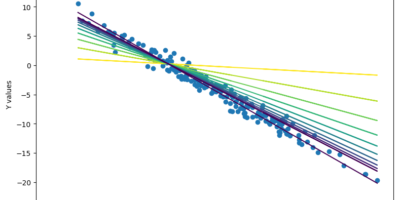German physicists at the University of Mainz have invented the world’s smallest and most efficient engine. The engine, less than a micrometer in length, runs on a single atom to convert thermal energy into mechanical energy.
This “nano-engine” uses the principle of one of the simplest engine types: a Carnot Engine. A Carnot Engine is essentially a reversed Carnot cycle and uses the transfer of heat to produce mechanical energy. The nano-engine works on a similar principle.
The physicists trapped an atom, specifically a calcium-40 ion, in an electromagnetic cone that squeezes tightly around the atom. Then two lasers are shot on either end of the cone. One laser, on the smaller, pointy end heats the atom, and the laser on the larger base cools the atom. The heating of the atom causes it to expand and forces it towards the base of the cone since it is so tightly encapsulated. Then, at the base, the atom cools and is forced back to the pointy end of the cone. This cycle causes the atom to shoot back and forth through the cone thereby creating mechanical energy similar to a piston in a car engine.
The most interesting part, though, is the fact that by adding one additional feature to the engine, its efficiency become larger than the Carnot Limit – the absolute maximum efficiency any engine can have based on the second law of thermodynamics.
This feature is called “squeezing” the atom. When the atom reaches the pointy end of the cone, where it gets heated, the cone contracts in a way that causes the atom to enter a quantum mechanical condition called a “squeezed state.” The squeezed state is one of the quirks of quantum mechanics, and putting the atom in a squeezed state doesn’t actually transfer any energy to it.
The atom is then slightly bigger than normal and pulsating due to the squeezed state, which gives the engine a slight boost. This squeezing of the atom is analogous to a supercharger in a car. With the inclusion of the squeezing, the engine surpasses the Carnot Limit by a fair margin.
Whether the engine actually surpasses the Carnot Limit, and thereby violates the second law of thermodynamics, is a matter of perspective. Some scientists point out that although squeezing the atom does not transfer any energy to it, the squeezing process does still require some energy. Including this energy in the efficiency puts the overall engine efficiency below the limit.
The scientists in Germany, however, argue that since no energy is transferred to the atom then there is no need to include the energy that goes into the squeezing process. That would be the same as including the energy required to pump oil out of the ground into calculating the efficiency of a car engine.
Either way though, we don’t have to panic about the second law no longer being valid. When dealing with the quirkiness of quantum mechanics a lot of fundamental laws are generally broken. That’s why observations in the quantum world can’t be scaled up to the macroscopic world. That is also why this discovery isn’t going to result in any super-efficient car engines anytime soon. Well, that and the fact that it takes a lab full of lasers, computers, electromagnetic fields and recording devices to work.
The discovery isn’t entirely useless. There may be some applications in quantum computers in the future, especially in transferring heat. Quantum computing is still in its infancy and every discovery like this helps develop the field further.




Leave a Reply